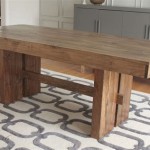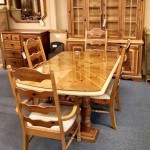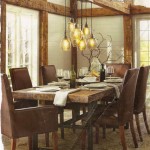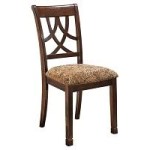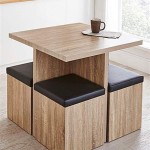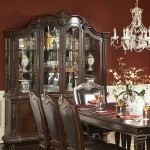How To Decorate a Small Dining Room Table
Decorating a small dining room table presents a unique design challenge. The goal is to create an inviting and aesthetically pleasing space without overwhelming the limited surface area. Thoughtful choices regarding centerpieces, linens, and overall styling are paramount to achieving a balanced and functional dining area. This article will explore several strategies for effectively decorating a small dining room table, emphasizing maximizing space and enhancing the room's ambiance.
Selecting the Right Tablecloth or Runner
The foundation of any table setting often begins with a tablecloth or runner. For a small dining room table, the choice between the two can significantly impact the overall aesthetic. A tablecloth provides comprehensive coverage, establishing a specific mood or formality, while a runner offers a more streamlined and minimalist approach, accentuating the table's natural material. The material, color, and pattern of the selected linen should complement the existing décor of the room.
When opting for a tablecloth, careful consideration must be given to its size. The tablecloth should drape evenly on all sides, typically extending between 8 to 12 inches beyond the table's edge. This length provides an elegant and balanced look without being so long as to become a distraction or an obstruction. A tablecloth that is too short will appear awkward and unfinished, while one that is too long can create a cluttered effect.
A table runner is a versatile alternative, particularly for smaller tables. Runners can be placed lengthwise down the center of the table, creating a focal point and adding a layer of visual interest. Alternatively, two runners can be placed perpendicular to each other, effectively defining individual place settings. This approach is particularly useful for highlighting specific elements of the table setting, such as chargers or centerpieces.
The choice of fabric is crucial for both tablecloths and runners. Natural fibers such as cotton and linen offer a classic and breathable option, suitable for both casual and formal settings. Synthetic fabrics like polyester are more resistant to wrinkles and stains, making them a practical choice for everyday use. Consider the overall style of the dining room when selecting the material. A rustic dining room might benefit from a linen runner, while a more formal setting might call for a damask tablecloth.
Color and pattern play a significant role in setting the tone of the dining area. Lighter colors can make a small space feel more open and airy, while darker colors can add depth and drama. Patterns can add visual interest, but it is important to use them sparingly in a small space to avoid overwhelming the eye. A subtle pattern or texture can be more effective than a bold, large-scale design.
The occasion for which the table is being decorated should also influence the choice of linens. A casual brunch may call for a simple cotton runner in a bright color, while a formal dinner party might require a crisp white linen tablecloth with elegant embroidery. Adapting the linens to the specific event demonstrates attention to detail and enhances the overall dining experience.
Creating Focal Points with Centerpieces
A centerpiece is a critical element in table decoration, serving as the focal point and drawing the eye to the center of the dining space. For small dining room tables, it is crucial that the centerpiece is proportionate to the table's size and does not impede conversation or the placement of dishes. The ideal centerpiece should be visually appealing without being overly large or obstructive.
One effective approach is to utilize a single, striking object as the centerpiece. This could be a vase of flowers, a sculptural bowl, or a grouping of candles. The key is to choose an item that is visually interesting and complements the overall aesthetic of the room. The size of the object should be carefully considered to avoid overwhelming the table. A tall, slender vase with a few carefully chosen blooms can be more impactful than a large, bushy arrangement.
Another option is to create a miniature vignette using a collection of smaller objects. This approach allows for more flexibility and creativity, but it requires careful curation to avoid a cluttered look. When grouping multiple objects, consider factors such as height, scale, and color. Varying the heights of the objects can create visual interest, while maintaining a consistent color palette can tie the vignette together.
Natural elements can add a touch of organic beauty to a dining table centerpiece. A simple bowl of fruit, a collection of seashells, or a small potted plant can create a fresh and inviting atmosphere. These elements are particularly well-suited for casual dining spaces, adding a touch of nature to the interior. When using natural elements, ensure they are well-maintained and do not detract from the overall dining experience.
Candles are a versatile and effective option for creating ambiance. A cluster of pillar candles in varying heights can add warmth and sophistication to any dining table. Alternatively, a single, elegant candelabra can serve as a dramatic focal point. When using candles, it is important to consider safety precautions, such as placing them away from flammable materials and ensuring they are extinguished before leaving the room.
The selection of a centerpiece should also take into account the seasonality of the year. A centerpiece featuring pumpkins and gourds can be ideal for autumn, while a centerpiece featuring evergreen branches and ornaments can be appropriate for the winter holidays. Adapting the centerpiece to the seasons adds a dynamic element to the dining room decor and keeps the space feeling fresh and updated.
Finally, it is important to consider the functionality of the centerpiece. It should not obstruct the view across the table or make it difficult to serve food. Low-profile centerpieces are often the best option for small dining room tables, as they allow for easy conversation and accessibility to dishes. The goal is to create a centerpiece that enhances the dining experience without being disruptive.
Optimizing Space Through Strategic Placement and Functionality
In a small dining room, every inch of space is valuable. Therefore, strategic placement of items on the table is crucial for maximizing functionality and creating a visually appealing arrangement. Clutter should be avoided at all costs, and each item should serve a specific purpose or contribute to the overall aesthetic. The goal is to create a balanced and organized table setting that enhances the dining experience without feeling cramped or overwhelming.
Consider the use of tiered serving dishes. Tiered dishes elevate food presentation and save valuable table space by stacking items vertically. This is especially useful for buffet-style meals or when serving multiple courses. The tiered design adds visual interest to the table while simultaneously maximizing the available surface area.
Foldable or collapsible items can be particularly useful in small dining rooms. A folding trivet or a collapsible serving stand can be easily stored away when not in use, freeing up valuable table space. These items are especially practical for everyday dining, allowing for quick and easy setup and cleanup.
The placement of cutlery and glassware should be carefully considered. Cutlery should be arranged in a logical order, with the forks on the left, the knives on the right, and the spoons to the right of the knives. Glassware should be placed above and to the right of the cutlery. This arrangement ensures that guests can easily access the utensils they need without having to search for them.
Consider using placemats instead of a full tablecloth for everyday dining. Placemats define individual place settings and protect the table from spills and scratches. They also offer an opportunity to add color and texture to the table setting without the bulk of a tablecloth. Placemats are a practical and stylish option for small dining rooms, allowing for easy cleanup and a streamlined look.
Avoid placing unnecessary items on the table. Decorative items that do not serve a specific purpose should be removed to free up space. This includes items such as coasters, napkin rings, and decorative bowls that are not being used. A minimalist approach is often the most effective way to maximize space in a small dining room.
Consider incorporating serving pieces that nest together for easy storage. Bowls, platters, and other serving pieces that can be stacked efficiently save valuable storage space in the kitchen. This is especially important in small homes where storage space is limited.
Multifunctional items can be particularly useful in small dining rooms. A serving tray that can also be used as a decorative centerpiece, or a set of bowls that can be used for both serving and storage, can help to maximize space and minimize clutter. These items are particularly valuable for those who are looking to simplify their lives and streamline their homes.
Ultimately, the goal of decorating a small dining room table is to create a space that is both functional and aesthetically pleasing. By carefully considering the size and shape of the table, the colors and patterns of the linens, and the placement of the centerpiece and other decorative items, one can create a dining area that is both inviting and efficient.
:strip_icc()/kitchen-table-ideas-17-becca-interiors-southampton-2ae87107ad6840779a77daf523d10323.jpeg?strip=all)
23 Kitchen Table Décor Ideas To Try In Your Home

13 Clever Design Tricks To Make Any Small Dining Room More Functional Table Decor

4 Interior Decor Tips For A Small Dining Table Set Laura James

15 Small Dining Room Ideas How To Decorate Your

15 Great Decor Ideas For Kitchen Table Centerpieces Centerpiece Dining

Beautiful And Easy Dining Room Table Centerpiece Ideas Stonegable

Small Dining Rooms That Save Up On Space Decoist

Small Kitchen Table Ideas S Tips From Hgtv

15 Small Dining Room Ideas How To Decorate Your

Small Dining Room Ideas Space Rooms Hgtv


